70 Years of Chinese Economic Development: 1949-2019
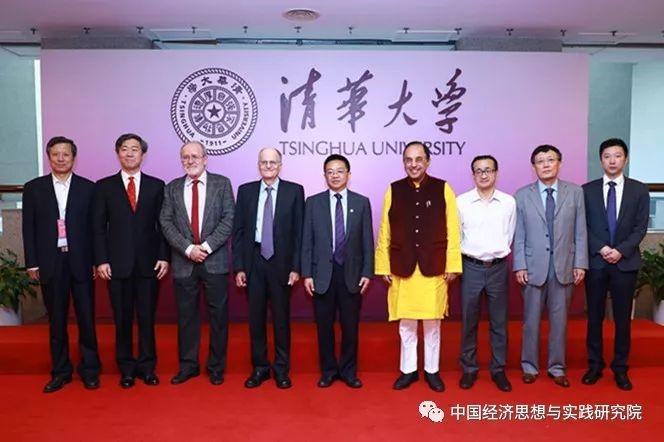
(Left to right:Xu XIanchun、Li Daokui、Vladimir Popov、Thomas J. Sargent、Peng Gang、Subramanian Swamy、Liu Yuanchun、Pan Qingzhong、Li Keaobo)
On September 22, 2019, Tsinghua University’s Academic Center for Chinese Economic Practice and Thinking (ACCEPT) held the “International Symposium on 70 Years of Chinese Economic Development: 1949-2019.” David Daokui Li, the Founding Dean of ACCEPT and Chief Economist at the New Development Bank (NDB), also issued a report by the same title. The report expounds upon the importance of reviewing the economic and social development of the People's Republic of China since its founding, advocates for the refinement of lessons learned from experience, and contemplates future development and its challenges. Leading scholars from home and abroad attended the symposium, including Thomas J. Sargent, the American economist awarded the 2011 Nobel Prize for Economics, and Gao Peiyong, Vice President of the Chinese Academy of Social Sciences (CASS). Dr. Li Keaobo, Executive Vice Dean of ACCEPT, presided over the symposium.
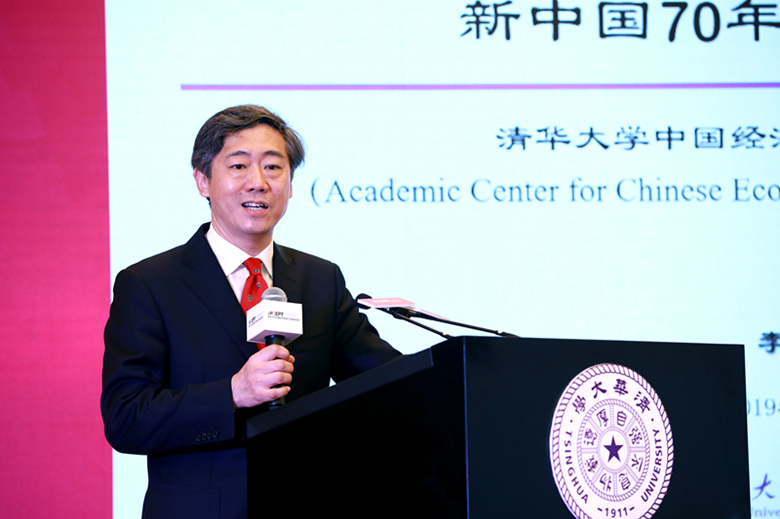
(Li Daokui)
David Daokui Li believes that China has achieved extraordinary results in economic development over the past 70 years. It is crucial to convey our experiences, stories, and theories, and to summarize our experiences and lessons from a theoretical perspective. This approach is not only a stepping stone for further development but also a good way to promote mutual understanding and resolve misconceptions. From his review of China’s 70 years of history, Daokui Li maintains that the economic development of the last 40 years has sustained the main trend of the first 30 years, but also shows a sheer difference in terms of thinking, mechanisms, and institutional arrangements. Therefore, these two development stages should be analyzed separately.
The first 30 years stretch from the founding of the nation in 1949 to reform and opening-up in 1979, during which China established an independent and complete industrial system and national economy. This period laid a solid foundation for China’s development in the latter 40 years, and also provided two valuable lessons from the perspective of economic theory: 1) public health, basic education, and infrastructure are the basis of rapid development; and 2) independent innovation is entirely feasible as long as education is opened up and new talents are introduced and used. Furthermore, this economic period illuminated three more lessons for China: 1) if the function of the market were to be fully replaced by administrative forces, the efficiency of economic development would be minimized; 2) economic growth is impossible without incentives offered by government policymakers; and 3) over-concentration of decision-making authority and processes leads to major failures.
The latter 40 years witnessed the largest and most extraordinary economic growth in the history of China and of the world. The non-market economy, beginning with strict management and control from the government, eventually transformed into a socialist market economy with Chinese characteristics. Daokui Li believes that there are five economic considerations from this period worth summarizing: 1) economic growth required the creation and growth of new enterprises—it was essential to motivate local governments to create a sound business environment; 2) rapid land-use changes were the key to economic growth—it was necessary to encourage local governments to convert agricultural land to industrial or commercial land; 3) a stable and sustainable financial environment allowed people to convert household savings into real economic investment; 4) the fundamental role of opening-up was to offer a chance for study, rather than simply capitalizing on comparative advantages or absorbing foreign capital and technologies; 5) prudent macro-control helped prevent large economic fluctuations due to the irrational behavior of micro-entities.
The report predicts that within 5 years, China will not only achieve the goal of building a moderately prosperous society in all respects, but may also enter the ranks of the world’s high-income countries. Within 15 years, the middle-income population will expand from 400 million to 800 million people, and within 30 years, China’s economy will become the world's largest. During this time, China will also become an important global center for scientific research and will complete the most distinctive and leading economic and social governance system in the world. However, several challenges remain on the road to realizing such grand goals, such as: 1) sustaining industrial upgrading and economic development; 2) shaping the market economy with Chinese characteristics in modern times; and 3) playing a better leadership role in the international arena.
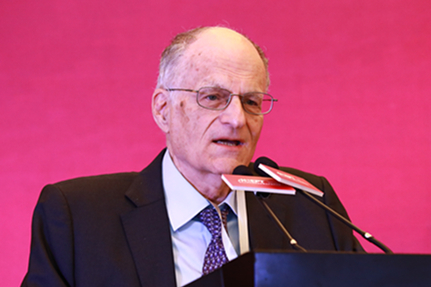
(Thomas J. Sargent)
The Nobel Prize-winning economist, Thomas J. Sargent, currently a professor of economics at New York University, also shared his views during the symposium: 1) during the past 70 years, China has achieved great results, particularly in public health and education; 2) an incentive mechanism is very important for the operation and mutual cooperation of economies; 3) every country should review its history and comb through theories and practices of the past to learn from its experiences; and 4) free trade is important and reciprocal. Sargent specifically stressed that policies enacted by the U.S. government to increase tariffs will only continue to harm American interests.
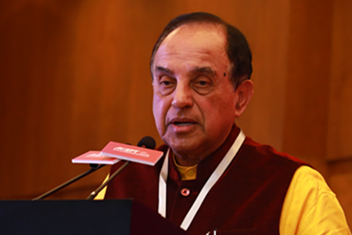
(Subramanian Swamy)
Dr. Subramanian Swamy, former President of the Bharatiya Janata Party (BJP), former Cabinet Minister of Commerce and Law, and economics Ph.D. from Harvard, delivered an address based on combined research findings of China-India comparative economics over the years. First, he reviewed China’s great achievements before 2010, including rapid GDP growth, restructuring and structural optimization, greater infrastructure input, decreased unemployment, and a small wealth gap. Subsequently, Dr. Swamy addressed China’s post-2010 decline in GDP and TFP growth rate, arguing that in the past, as China mainly relied on the capital and labor growth, it was constrained by diminishing marginal returns. As labor cost increases and competition in the international market becomes fierce, China needs to further promote innovation, adjust policies toward foreign trade, and relieve private enterprises’ difficulty in obtaining loans.
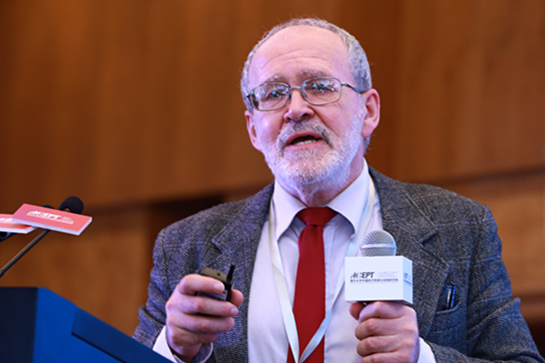
(Vladimir Popov)
According to Vladimir Popov, Principal Researcher at the Central Economics and Mathematics Institute of the Russian Academy of Sciences and Research Director for the Dialogue of Civilizations Research Institute, foreign countries have been amazed by the massive economic growth that China has achieved over the past 40 years of reform and opening up. However, he posits that economic marketization and liberalization were not the root causes of this growth. Rather, as detailed in the research report, it was China’s development during the first 30 years that laid the foundation for its subsequent economic take-off through improvements in health, education, infrastructure, strong state power, and government implementation mechanisms. Stable social order and reasonable government regulation were prerequisites before market-oriented reforms could allow China to witness the miracle of economic growth. Furthermore, Popov posits that China’s slowdown in recent years is a result of policy development, which has been reflected in exchange rate appreciation, absorption of surplus foreign exchange reserves, and stagnant investment. In his view, if China shifts from being export-oriented to focusing more on domestic demand, there will still be room for economic growth.
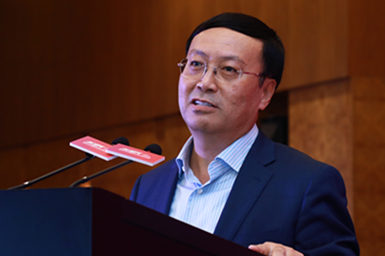
(Gao Peiyong)
Gao Peiyong, Vice President of the Chinese Academy of Social Sciences (CASS), contends that the theoretical foundation for China’s 70-year economic development was neither classic Marxist discourse nor mainstream Western economic theory, but rather economic practice rooted in the unique realities of China. He emphasized that the most prominent feature of economics in China is practicality—progress is made by exploring, summarizing, and refining lessons learned in economic practice. Efforts are made to solve different problems at different stages, and it is this process that drives the research and discoveries of Chinese economics. Gao Peiyong believes that the establishment of a Chinese system for economic studies is inevitable and important.
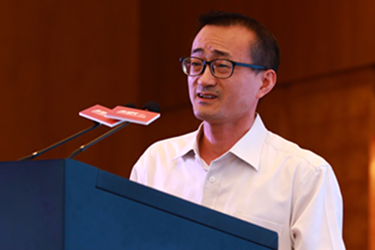
(Liu Yuanchun)
As the Vice President of Renmin University of China (RUC), Liu Yuanchun, put it, it was the common consensus of the Chinese social sciences academic community and the necessity of the times to establish the Chinese economic paradigm. According to the analysis of RUC’s research team, China’s macroeconomic growth and low volatility are mainly due to China’s investment stability, especially the counter-cyclical investment of state-owned enterprises (SOE), as opposed to the short-term adjustment of fiscal and monetary policies. China’s macroeconomic regulation and control has multiple objectives, elements, and tools. That is to say, government institutions use strategic planning, laws and regulations, and various policies and administrative means to realize economic restructuring and address prevailing market failures.
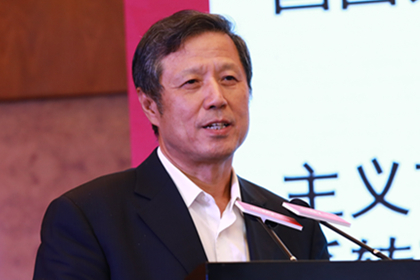
(Xu Xianchun)
In the final address of the symposium, Xu Xianchun, former Deputy Director of the National Bureau of Statistics and Director of the Tsinghua China Data Center, analyzed the evolution of important statistical indicators, methods, and systems in economic development. First, he pointed out that the macroeconomic indicator of gross domestic product (GDP) plays an important role in formulating economic policies and examining the scientific effectiveness of policies. Next, he compared the Material Product System (MPS) based on the calculation of national income and SNA based on the calculation of GDP so as to review the development of the national economic accounting system after the founding of the People's Republic of China. Finally, he concluded by detailing that in order to meet the needs of economic analysis and management, the National Bureau of Statistics is continuously improving accounting methods, revising basic classifications, implementing the reforms of the census and statistical investigation system, and gradually increasing and standardizing the accounting method of GDP. Therefore, the quality of data and its international comparability are continually improving.




